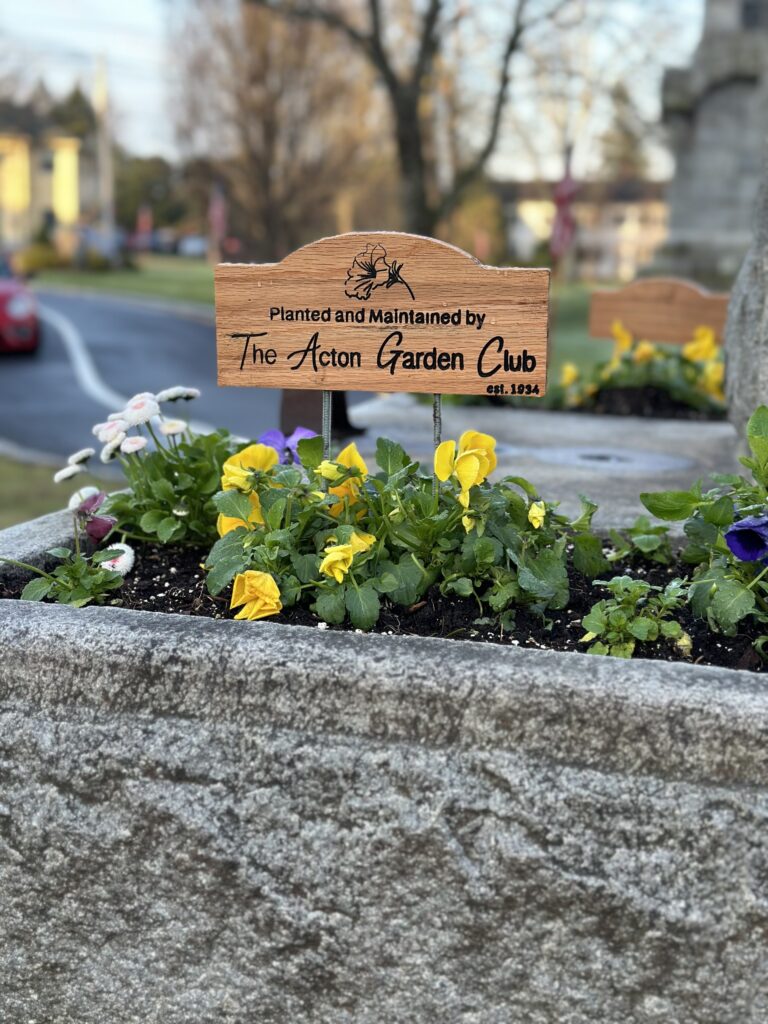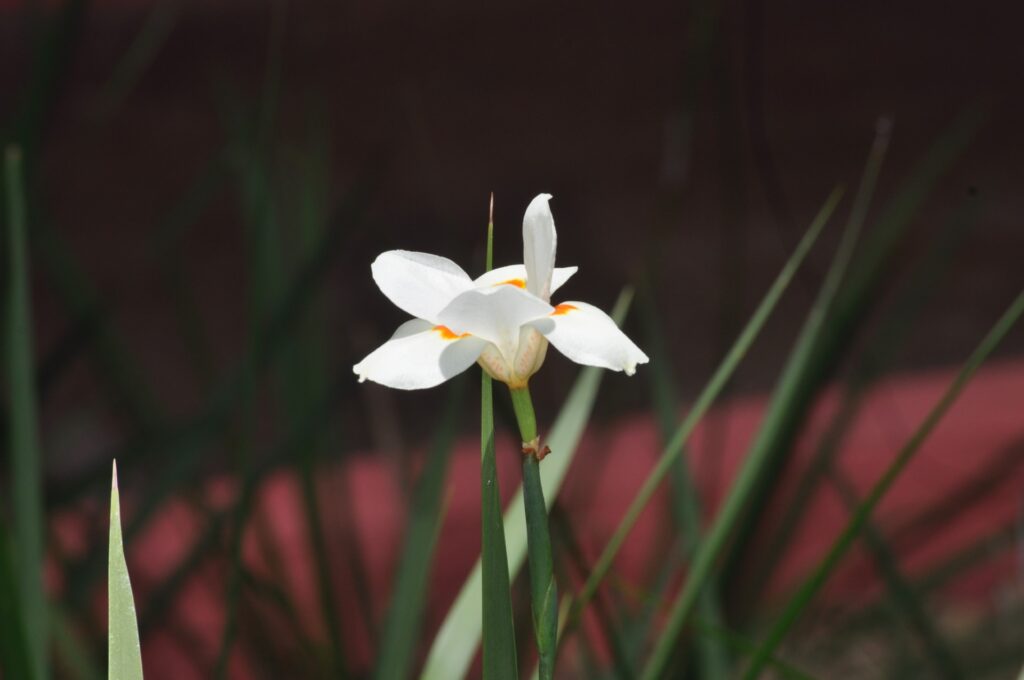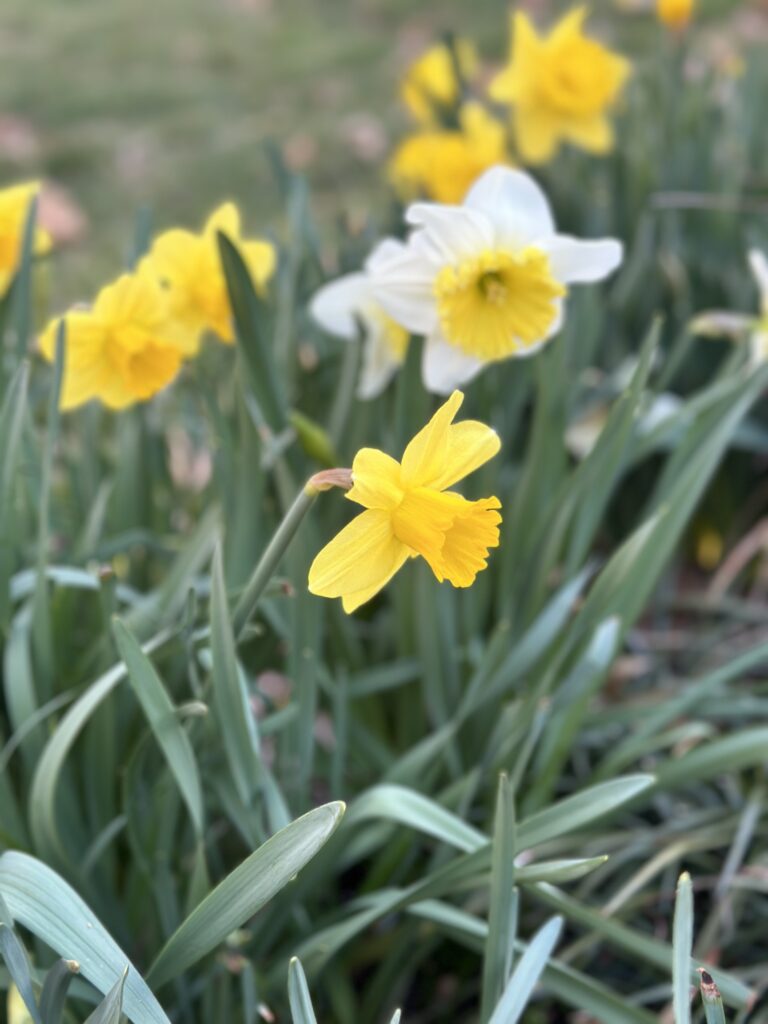Bulb Foliage
When the spring bulbs begin to decline, it’s important not to cut back the foliage. After flowering, the plants continue to photosynthesize and are storing these food reserves in the bulb for next year. Removing spent flower stems is all right, but let the foliage die back naturally. Do not tie-back or braid foliage as plants need as much leaf area possible to photosynthesize.

Pruning and Dividing Shrubs
Shrubs that bloom in the spring will have set buds in late summer to early fall of the previous year. These shrubs should not be pruned until after they bloom in the spring.
Summer and fall blooming shrubs develop buds in the spring and can be pruned in early spring before bud set. Prune them now! The appearance of Forsythia flowers is a good indicator. Prune: butterfly bush (Buddleia), smoke tree (Cotinus), Hydrangea arborescens ‘Annabelle’, Hydrangea paniculata varieties, beautyberry bush (Callicarpa), summersweet (Clethra), sweetspire (Itea), Rose of Sharon (Hibiscus syriacus) and Spirea.

Hydrangeas that bloomed on last year’s old wood should be pruned after flowering. Remove only dead stems now. Prune climbing Hydrangea and train it to a vertical structure.
Prune out winter breakage as soon as seen. With broadleaf evergreens such as Rhododendron, boxwood, and holly, wait a month or two to see if the browned leaves will drop off and re-leaf naturally.
Prune roses by cutting back to the base of all canes that are dead, damaged, thin or weak. On hybrid tea, grandiflora and floribunda types, remove all but 3 to 5 of the remaining canes, prune them to a height of 15-18 inches. Make sure the cut is just above an outward facing bud. Modern shrub roses need less intensive pruning. Thin out a third of the oldest canes cutting them back to the base.
April is a good time to transplant a shrub. Do it before its leaves emerge.
Perennials
Dig and divide perennials as soon as their new shoots appear—the earlier, the better. Most perennials will benefit from division every 3 to 5 years to reinvigorate the plants and ensure abundant blooms from year to year. When dividing older perennials, discard the center of each clump and replant with sections from the outer edges where shoots are more vigorous. (I find it much easier to divide hostas in the spring when the foliage is just emerging. In the fall, it is more difficult as the leaf foliage gets in the way.)

Lawn and Garden
Be sure the lawn is dry before raking to remove branches, stones and other debris. Lightly raking the lawn with a leaf rake will help to rejuvenate it from the winter. Fertilize only if a late fall application was not made. When Forsythia is in full bloom apply pre-emergent crabgrass control if needed.
Do not work your soil when it is wet. It will damage the soil structure. Use the squeeze test. Take a handful of soil and squeeze it. If the soil crumbles easily when you open your hand, it is ready to be dug. It is not ready if water comes out.
Begin to edge beds and prepare for mulching. Check the depth of landscape mulches; replenish before annual weeds begin to germinate. Mulches should be 2 to 4 inches deep, but not in contact with woody plants. It’s best to mulch before herbaceous plants emerge. Mulch may not be needed every year. A light top dressing may be adequate.
Judy Dembsey is the chair of environmental education and a member of the board of the Acton Garden Club.


